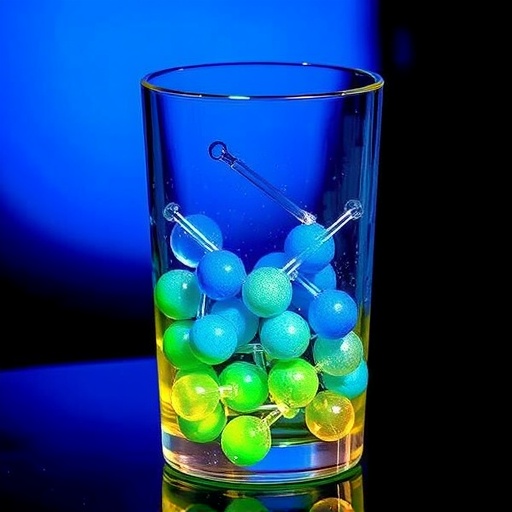Advancements in Laser Glass: A Strategic Approach to Designing Complex Materials

The design of advanced laser materials has always stood at the cutting edge of optics and photonics research. Recently, a research team from the South China University of Technology has introduced a groundbreaking strategy for streamlining the development of rare-earth-doped laser glasses — materials with enormous potential in telecommunications, solid-state lasers, and optical amplifiers.
Their work, recently published in Materials Futures, centers on the neighboring glassy compounds (NGCs) model, a statistical framework capable of predicting the luminescent and structural properties of complex glasses. This breakthrough promises to reduce the reliance on traditional trial-and-error experimentation, accelerating the path to new discoveries in materials science.
Why Rare-Earth-Doped Laser Glasses Matter
Rare-earth (RE) ions, such as erbium (Er³⁺), are the cornerstone of many optical technologies. Their ability to emit light efficiently across broad spectra makes them indispensable for fiber-optic communications, medical imaging, laser surgery, and high-power industrial lasers. However, embedding these ions into amorphous glass networks poses immense challenges. Glass lacks the ordered structure of crystals, making it difficult to understand how microscopic arrangements translate into macroscopic optical properties.
Historically, researchers have relied on iterative experiments to test different compositions. While this has led to many successes, the approach is slow and limited in predictive power. As global demand for faster communications and more efficient energy systems grows, the need for rational, predictive design of optical materials has become urgent.
The Innovation: Neighboring Glassy Compounds (NGCs) Model
The NGCs model treats the environment around rare-earth ions as a statistical ensemble, effectively bridging the gap between short-range order (SRO) and medium-range order (MRO) in complex glass systems. By focusing on average contributions from surrounding glassy compounds, the model can predict both structure and luminescence properties with remarkable accuracy.
Validation studies comparing the model with molecular dynamics simulations and experimental data on Er³⁺-doped germanate glasses showed strong agreement. This establishes the NGCs framework as a reliable tool for guiding the design of future laser materials.
From Structure to Function: Accelerating Discovery
One of the most exciting aspects of this research is its capacity to map composition-property relationships. With the ability to generate multi-luminescence property charts, researchers can rapidly identify glass compositions that meet multiple performance constraints — for example, optimizing both optical efficiency and thermal stability simultaneously.
This approach also opens the door to high-throughput screening of new materials. Instead of years of experimental testing, potential candidates for next-generation optical devices could be identified in weeks or months, drastically cutting down the innovation cycle.
Future Directions and Applications
Looking ahead, the NGCs model could go far beyond optical properties. By incorporating thermal and mechanical characteristics into the predictive framework, scientists may soon be able to engineer laser glasses with optimized durability and heat management — key considerations for both industrial and defense applications.
From faster telecommunications networks to advanced medical lasers, the potential ripple effects of this research are vast. By rationalizing how glass compositions translate into performance, the NGCs model represents a paradigm shift in the way materials science tackles the complexity of amorphous systems.
For more details, you can read the original article here: Advancements in Laser Glass: A Strategic Approach to Designing Complex Materials .
*This article was prepared with the assistance of AI technologies to support research communication.*
Sponsored by PWmat (Lonxun Quantum) – pioneers in GPU-accelerated materials simulation software empowering breakthroughs in quantum materials, energy research, and semiconductors. Explore how PWmat can accelerate your R&D: https://www.pwmat.com/en
📘 Discover more: PWmat PDF Brochure
🎁 Free Trial Available: Request Your Trial Here
📞 Phone: +86 400-618-6006
📧 Email: support@pwmat.com
#LaserGlass #MaterialsScience #Photonics #RareEarth #OpticalMaterials #NGCsModel #LaserTechnology #QuantumServerNetworks #PWmat #InnovationInMaterials

Comments
Post a Comment